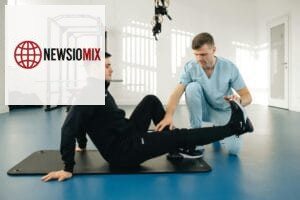Why Slow Workouts Are the New Fitness Trend: Build Muscle, Burn Fat, and Protect Your Joints
Why Slow Workouts Are the New Fitness Trend
Imagine pushing yourself through an intense workout, sweating, muscles burning, heart racing. Now, imagine getting the same — or even better — results by slowing things down. Sounds too good to be true? Well, it isn’t. Slow workouts are gaining serious attention among fitness experts, athletes, and everyday people looking for effective, joint-friendly training methods.

Over the last couple of years, “tempo training” and “time under tension” have become buzzwords in the fitness world. But what exactly do they mean, and why are slow workouts becoming the new go-to for building strength, burning fat, and protecting long-term health?
Let’s break it down.
—
What Are Slow Workouts?
Slow workouts, also known as tempo training, involve performing exercises at a deliberately controlled speed. Instead of rushing through 20 push-ups in 30 seconds, you might take 4 seconds lowering yourself, 2 seconds holding at the bottom, and 4 seconds pushing back up.
It’s all about extending the “time under tension” — the period your muscles are actively working.
This technique is not about moving slowly just for the sake of it. It’s about maximizing every second of effort. Slowing things down forces your muscles to work harder, challenges your stability and balance, and puts your mind in the moment.
—
Why Slow Workouts Are So Effective
Many people associate fast-paced workouts with fat loss and strength building. But slow workouts offer unique benefits backed by science:
1. Muscle Growth (Hypertrophy)
When muscles stay under tension longer, they experience more microscopic damage, which leads to greater growth during recovery.
Example:
4-second down, 2-second pause, 4-second up push-ups work your chest much harder than quick reps.
2. Fat Burning Potential
Slower reps mean more control and engagement, increasing heart rate gradually and keeping calorie burn steady throughout the session. It feels more like a mix of strength and cardio.
3. Joint Protection
Fast, jerky movements often lead to injury — especially with heavy weights or poor form. Slow movements reduce risk by promoting good technique and keeping movements smooth and safe.

4. Mind-Muscle Connection
By focusing on the feeling of each rep, you engage muscles more intentionally, which research suggests leads to better overall results.
—
How to Start Slow Workouts: A Beginner Routine
You don’t need fancy equipment or a gym membership to begin. Here’s a simple slow workout routine you can try today:
Slow Bodyweight Routine (15 Minutes)
Slow Push-Ups:
4 seconds down – 2 seconds pause – 4 seconds up
8–10 reps
Slow Squats:
5 seconds down – 1-second hold – 5 seconds up
10–12 reps
Isometric Wall Sit:
Hold seated against the wall for 30–60 seconds.
Slow Plank to Push-Up:
3 seconds down to elbow plank – 3 seconds up to push-up position.
10–12 reps
Repeat this circuit 2–3 times.

—
Tips for Making Slow Workouts More Effective
1. Use a Timer or Metronome
Keeping a consistent tempo is key. Apps like “Seconds” or “SmartWOD” can help.
2. Focus on Form, Not Speed
Quality beats quantity. One perfectly controlled rep is worth more than five rushed ones.
3. Breathe Intentionally
Many forget this. Exhale during the hard part of the movement, inhale during the easier phase.
4. Listen to Your Body
It should feel challenging but never painful. If your form breaks down, pause and rest.
—
Bonus: Slow Workouts and Mental Health
There’s another hidden benefit to slow workouts: they help calm the mind. Because you’re moving deliberately, there’s no room for distractions. It becomes a form of moving meditation, similar to yoga.
Slowing down your workout can help you slow down your thoughts, especially in a world where everything feels rushed and noisy.
—
Why Now Is the Time to Try Slow Workouts
Injuries, burnout, and workout fatigue are real problems for many fitness lovers. Slow workouts offer a fresh, sustainable way to keep progressing without sacrificing your joints or peace of mind.
Whether you’re a beginner looking for safe entry into fitness, or an experienced athlete wanting to shake things up, giving slow workouts a try could be the smart move you didn’t know you needed.
Not every workout has to leave you gasping for air to be effective. Sometimes, slowing down is exactly what your body needs to move forward.
So next time you hit the gym — or even your living room floor — take a deep breath, slow it down, and feel the difference.
recorces
https://www.ncbi.nlm.nih.gov/pmc/articles/PMC8310485/
https://www.webmd.com/men/features/want-more-strength-slow-down
Share this content:




